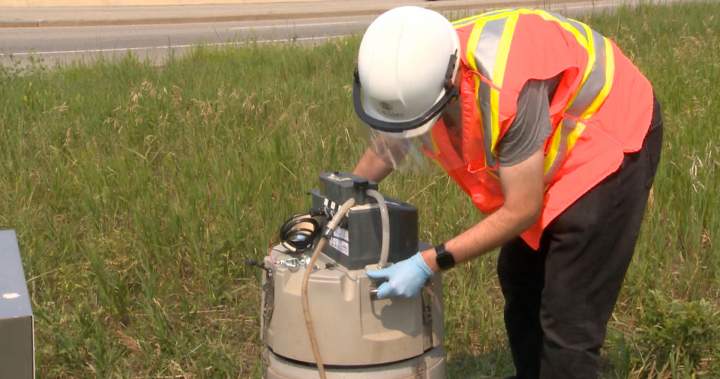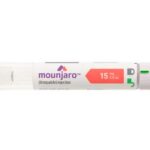As I walked through the University of Calgary’s microbiology lab last week, Dr. Casey Wong carefully transferred a small vial of wastewater sample into a testing apparatus. “This isn’t just sewage,” he told me, adjusting his safety goggles. “This is our early warning system.”
Alberta has joined a growing number of regions turning to wastewater surveillance—a method that gained prominence during the COVID-19 pandemic—to detect measles virus before community outbreaks become widespread. The initiative comes amid rising concern about declining vaccination rates and the reemergence of a disease once considered eliminated in Canada.
“People shed the virus in their stool before they even develop the characteristic rash,” explained Dr. Wong, who leads the university’s Environmental Virology Research Group. “By testing wastewater, we can potentially detect measles circulation up to a week before clinical cases appear in hospitals.”
The program, a collaboration between Alberta Health Services, the University of Calgary, and the University of Alberta, currently monitors wastewater from treatment plants serving over 70% of the province’s population. Samples are collected twice weekly and analyzed using polymerase chain reaction (PCR) testing that can identify genetic material from the measles virus.
For Cree elder Margaret Whitecalf, who I met at a community health forum in Edmonton, the return of measles represents a painful reminder of historical health inequities. “My mother lost two siblings to measles in the 1940s,” she shared, her voice softening. “These diseases hit our communities hardest when prevention fails.”
Indeed, Canada has witnessed a troubling resurgence of measles cases. According to the Public Health Agency of Canada, the country has already recorded 29 cases in 2024—more than double the annual average from pre-pandemic years. Alberta itself has confirmed five cases since January, all linked to international travel.
Dr. Deena Hinshaw, Alberta’s former chief medical officer of health who now works with the wastewater surveillance program, emphasizes that declining vaccination coverage lies at the heart of measles’ return. “We’ve seen MMR immunization rates drop below 85% in some communities,” she noted during our interview at her Edmonton office. “We need 95% coverage to maintain herd immunity.”
The wastewater testing initiative isn’t without challenges. Dr. Xiaoli Pang, a virologist at the Provincial Laboratory for Public Health in Edmonton, explained the technical hurdles when I visited her lab. “Measles has a lower concentration in wastewater than some other viruses we track. We’re constantly refining our methods to improve sensitivity.”
Despite these challenges, early results from the program have been promising. In February, wastewater sampling detected measles genetic material in Calgary’s Bonnybrook treatment plant three days before the first clinical case was reported in the city’s southeast region. This early signal allowed public health teams to alert local healthcare providers and prepare response protocols.
For families like the Patels, whom I met at a Calgary immunization clinic, the program offers reassurance. “Our daughter is only eight months old—too young for her first measles vaccine,” said Priya Patel, gently rocking her baby. “Knowing there’s a system watching for outbreaks helps us make safer decisions about where we take her.”
Beyond detection, wastewater surveillance offers valuable population-level data without individual testing. Dr. Maria Rodriguez, an epidemiologist with Alberta Health Services, told me this approach is particularly useful for tracking disease in communities where healthcare access may be limited.
“Not everyone with measles will seek medical care, especially those with barriers to accessing healthcare,” she explained. “Wastewater captures signals from the entire connected population, regardless of whether they visit a doctor.”
The program also serves an educational purpose. At Edmonton’s Jasper Place High School, science teacher David Novak uses the wastewater testing program to teach students about epidemiology and public health. During my visit to his classroom, students were graphing theoretical virus levels in wastewater and predicting how fast an outbreak might spread.
“It makes the science real for them,” Novak said. “They understand that public health isn’t abstract—it’s about protecting their grandparents, their little siblings, their community.”
The technology behind the program continues to evolve. Researchers at the University of Alberta are developing portable testing equipment that could enable remote communities to conduct their own wastewater surveillance. These communities often face the highest risk from measles outbreaks due to limited healthcare infrastructure.
Dr. Wong believes wastewater surveillance represents a fundamental shift in how we approach disease control. “For decades, we’ve relied on clinical reporting, which means waiting until someone is sick enough to seek care,” he said. “Wastewater gives us a head start—potentially days or weeks to implement protective measures.”
As Alberta’s measles wastewater surveillance program expands, public health officials hope it will become a permanent part of the province’s infectious disease monitoring system. Similar programs have already been established in Ontario and British Columbia, with others in development across the country.
Standing beside the churning tanks at Edmonton’s Gold Bar Wastewater Treatment Plant, watching as technicians collected samples for testing, I was struck by the elegant simplicity of the approach: the stories of our collective health, flowing beneath our feet, waiting to be read.






